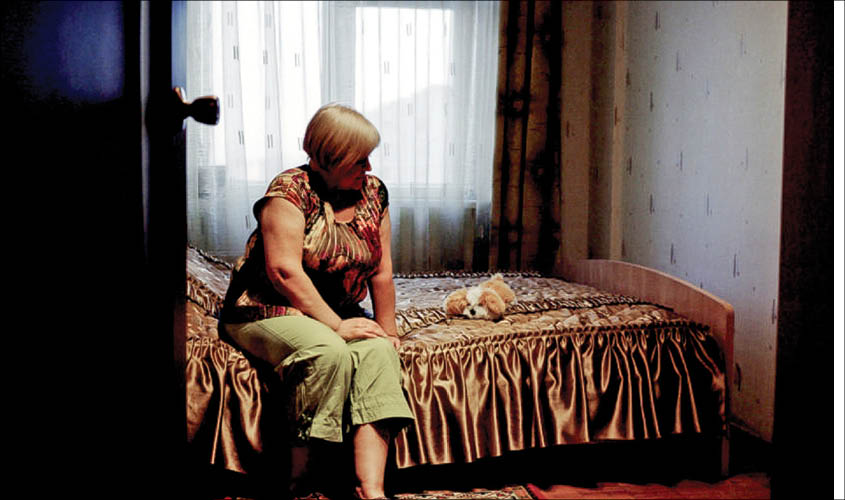A new solo show now on view at Delhi’s India International Centre features the work of the German photographer André Lützen, whose recent series, Living Climate, focuses on the theme of life under extreme weather, writes Bhumika Popli.
The German photographer André Lützen could well consider becoming a biographer or maybe a travel writer, along with working as a lensman. Just look at the photographs on display at Delhi’s India International Centre. They capture the character of the subjects photographed, as if these people had known Lützen for a really long time.
These photographs are part of his solo show, entitled Living Climate: Tale of Three Cities. And through the 78 photographs on display, he tries to understand how climate influences people and their ways of living. Lützen worked in three cities—Kochi in southern India, Arkhangelsk in north-west Russia and Khartoum in Sudan—from 2014 to 2017 to make this series.

Khartum 1, by André Lützen.
He photographed everyday life in Kochi during the monsoon of 2014. Around this time, Lützen stayed in India for four weeks at the Pepper House Residency by invitation of the Goethe-Institut and the Kochi Muziris Biennale. He has titled the Kochi works Inside-Out. For these photos, he focused his lens on brightly coloured walls displaying tones of yellow, green and orange. A few of the walls show patches where the colour has scraped off. The texture is captured in fine detail. He also turned his attention to indoor spaces where his subjects are photographed resting near a table fan and an air cooler.
He had the liberty to choose the time of the year and hence decided to visit Kochi in the monsoon season. According to his statement, “Inside Out is photographed in Kochi, southern India, during monsoon season: for months the sun is hidden and the city is veiled in a clammy, milky grey haze. Heavy rains flood streets and public spaces and force people inside even though living spaces are crowded and the heat is suffocating. The pictures of this series focus on the life and living conditions in the city of Kochi during these monsoon months.”

Inside Out, Kochi.
The extremes of climate serve as this photographer’s muse. He went to the capital of Sudan, Khartoum, to witness people living in the aridly hot temperatures. He describes the city: “Khartoum is located where the Blue Nile and White Nile rivers converge. The huge, spread-out city actually consists of three distinct cities which are divided by the Nile and its two arms. The sub-Saharan desert climate produces a dry heat of 46 degrees. As in Arkhangelsk and Kochi, too, the climate makes for an extreme contrast between indoor and outdoor life.”
In the Khartoum photos, we are given an intimate introduction to local dwellings—the intricate designs on the furniture and ornamented décor of the homes. The subjects photographed here are presented in a laid-back guise, like those in the Kochi series. Dr Leonhard Emmerling, director

Zhili Byli, Russia.Photo: André Lützen
Lützen once said in an interview, “I don’t know why they all trust me. I talk to them and explain who I am and where I come from, what I’m doing and what the idea is. And I always send them the photos. What I take, I also have to give. It’s an exchange, which you have to respect and treat with sensitivity. In the end, it’s always a question of how you address people. You have to laugh with them. If you make people laugh, you immediately make them relaxed. And you can laugh with anybody, without having to talk. It’s quite easy. You simply have to make yourself into a bit of a clown.”
Lützen’s quest to get up close with extreme living conditions also took him to Arkhangelsk, a city in the north-west of Russia. He named his series Zhili Byli (Once upon a time…). “[This work] combines images of contemporary living and housing conditions with a series of portraits of residents from the city of Arkhangelsk. The city is plunged into freezing temperatures for eight months a year, sometimes as low as 40 degrees below zero… Inside pre-fab buildings or wooden houses residents have created cave-like havens of intimacy and comfort where they spend most of the year, while the world on the outside seems strangely neglected,” said Lützen.
The exhibition, in collaboration with Max Muller Bhavan, is on view at Delhi’s India International Centre till 10 October

